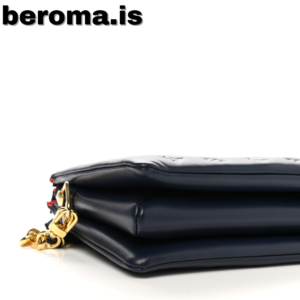The intersection of luxury fashion and counterfeit goods isn’t a new phenomenon, but there’s a growing trend that’s catching the attention of both savvy shoppers and high-end brands alike. “Super fakes” – counterfeit items so masterfully designed that they’re nearly indistinguishable from the real thing – are changing the consumer landscape. In the heart of this movement is the iconic Louis Vuitton bag – a symbol of luxury and status.
But what drives the consumption of these items? Is it just the allure of a high-quality item at an affordable price, or is there a deeper psychological and ethical dimension that buyers should consider? In this detailed exploration, we’ll examine the super fake trend, its implications, and how it’s reshaping our approach to luxury and authenticity.
The Rise of Super Fakes and Their Appeal to Consumers
The allure of a luxury item can be intoxicating. The feeling of carrying a Louis Vuitton bag can elevate one’s sense of style, confidence, and status. But it’s no secret that the prices of these iconic bags can be prohibitive for the average consumer. This has created a significant black market for counterfeit luxury goods that has been estimated to be as much as one trillion USD annually.
The emergence of super fakes is particularly intriguing because they offer such a convincing facsimile of the real product. Counterfeiters are not just making knockoffs; they’re producing items with craftsmanship so sophisticated that they often fool even the most discerning shopper. The price differential is also a major draw. While an authentic LV bag can cost thousands, a super fake might only set you back a few hundred. For many, it’s a tempting trade-off.
Furthermore, shopping for a super fake can sometimes feel like a treasure hunt. Finding a source for these items often involves obscure online communities, word of mouth, or under-the-radar retail operations. The exclusivity of obtaining one adds an element of adventure and exclusivity that some find thrilling.
The Ethical and Legal Maze of Super Fakes
The purchase of a super fake luxury bag isn’t just a financial transaction; it’s a choice with ethical implications. The most obvious concern is the impact on the fashion industry. Luxury brands invest heavily in design, innovation, and brand image. When consumers buy super fakes, they’re not just eschewing the high price tag of the genuine article; they’re undermining the very essence of what luxury represents.
There are also legal ramifications to consider. The manufacture and sale of counterfeit goods are crimes that have significant penalties attached. While the focus of enforcement is often on the sellers and not the buyers, there is still a risk of being on the wrong side of the law, particularly for repeat offenders.
From a broader perspective, the proliferation of super fakes represents a loss for society. It undermines the value of intellectual property, reduces incentives for brands to create new and original designs, and contributes to an ecosystem that can sometimes have links to more serious criminal activities.
Spotting the Difference: How to Distinguish a Super Fake from the Real Deal
For those determined to buy a Louis Vuitton or who simply want to avoid being duped, there are ways to identify a super fake. Here are a few telltale signs:
- The Material – Authentic LV bags are typically made from high-quality materials like canvas, leather, and high-end hardware. Super fakes often use materials that mimic the look but not the feel or durability.
- The Craftsmanship – Luxury bags are renowned for their flawless construction. Irregular stitching, uneven logos, or sloppy finishing are common giveaways of a fake.
- The Details – Little details can give away the authenticity of a bag, such as the placement of tags, the date codes, and the interior lining. Super fakes may get the big picture right but miss these finer points.
- The Experience – Buying an LV from a boutique is a unique experience, with personalized service and a sense of occasion. The retail environment, the packaging, and the overall experience can help confirm the authenticity of a purchase.
Beyond the Fake: Ethical Alternatives in the Fashion Industry
For consumers who crave the aesthetics of a luxury product without the worry of authenticity, several ethical alternatives exist within the fashion industry. Here are a few avenues to explore:
- Pre-Owned Market – Buying second-hand authentic luxury items not only ensures you’re getting the real thing but also extends the life cycle of a product, reducing waste.
- Designer Collaborations – Many high-end brands have collaborated with more accessible lines, creating designer items at a fraction of the cost of a traditional luxury product.
- Luxury Rental Market – Services that offer the rental of luxury items provide an opportunity to enjoy high-end fashion on a short-term basis, avoiding the need for a long-term investment in ownership.
The choice between a super fake and an authentic luxury item is about more than just money; it’s about values. In an era when authenticity and sustainability are becoming increasingly important, the decisions we make as consumers can have significant cultural, economic, and legal implications. It’s worth taking the time to consider what our purchases say about us and the world we want to live in.